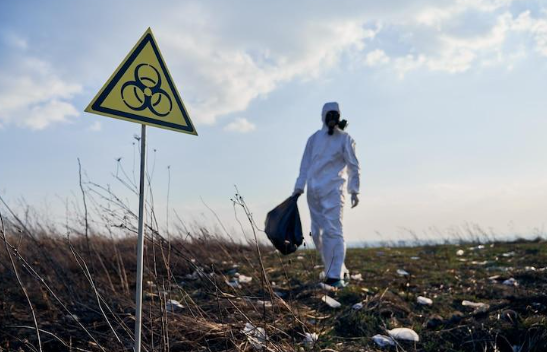On a daily basis, industries generate large amounts of waste that continuously pollute the environment and affect human life. Industrial waste sites are filled with harmful gases and polluted chemicals such as uranium mill tailings and phosphogypsum stacks. Among these, Radon-222 is a radioactive gas that constantly contaminates the air and atmosphere. Therefore, it is important to monitor radon emissions released from these sites to ensure compliance with environmental regulations and protect surrounding communities. Radon flux measurement is a critical step to detect and minimize these emissions for an eco-friendly approach.
1. Why Radon Flux Measurement Matters
When industries use uranium in their processes, it decays in soil and rocks and generates radon gas emissions. In industrial waste sites, this harmful gas escapes into the atmosphere and poses serious risks to workers, employers, and nearby residents. Therefore, industries need professional radon gas emission monitoring services to ensure that emission levels do not exceed safety limits. Some professional services provide radon flux measurements and monitor emissions from uranium mill tailings and phosphogypsum stacks. They use self-contained radon flux canisters that make testing simple and ensure compliance with EPA regulations.
2. Radon Measurement for Sustainable Practices
Radon flux measurement is essential to ensure sustainable industrial waste management. Regular monitoring encourages industries to adopt safe waste disposal techniques that minimize their carbon footprint. By measuring radon emissions, industries can control pollution and contribute to cleaner air for surrounding communities. Continuous monitoring also promotes green methods for waste containment and emission control. Radon flux monitoring ensures sustainable practices and enhances industrial productivity while protecting the environment and public health.
3. Safe Process of Measuring Radon Levels
These services provide safe and secure professional monitoring for industries. They handle the testing process carefully to prevent harm to anyone or anything. The radon flux measurement services use sealed chambers and detectors to determine the rate of radon emissions. After testing, they ensure the safe disposal of monitoring canisters. They remove the canister from the bag to maintain a proper seal between the canister and the surface. In this way, industries can regularly track radon emission patterns and identify high-risk areas.
4. Prevent Radon-Related Health Risks
Radon-222 emissions and exposure are hazardous and can severely affect the health of individuals, especially children and pregnant women. Even minimal exposure to radon gas can cause significant health problems, including stunted growth, weakened immunity, respiratory issues, and learning difficulties. The safety certification ensures that industrial operations using uranium are conducted safely. Many industries fail to implement safety regulations during sensitive chemical reactions, leading to health issues among workers and compromising their well-being.
5. Ensure Compliance with EPA Standards
Environmental protection agencies worldwide require industries to monitor and report radon emissions from waste sites. They must ensure compliance with the EPA’s safety certification. Meeting these standards guarantees that industries operate responsibly. Failure to comply with radon safety certification can result in investigations by state authorities. Industrial owners may face penalties for irresponsible behavior during harmful processes, and legal action may be taken to hold them accountable for endangering workers and the environment.

